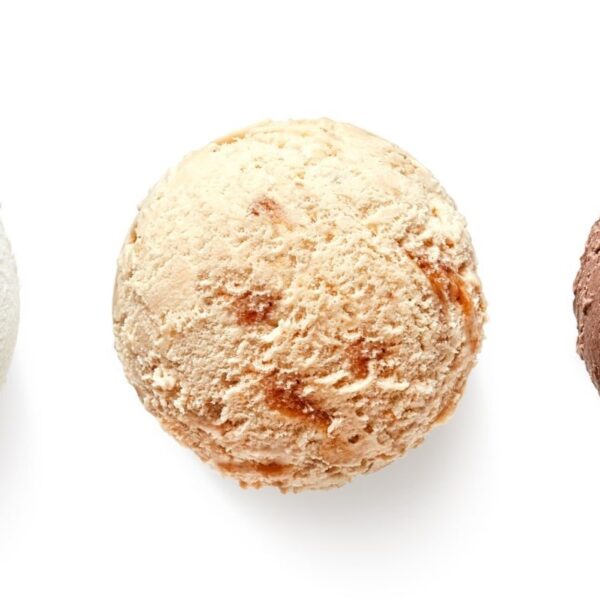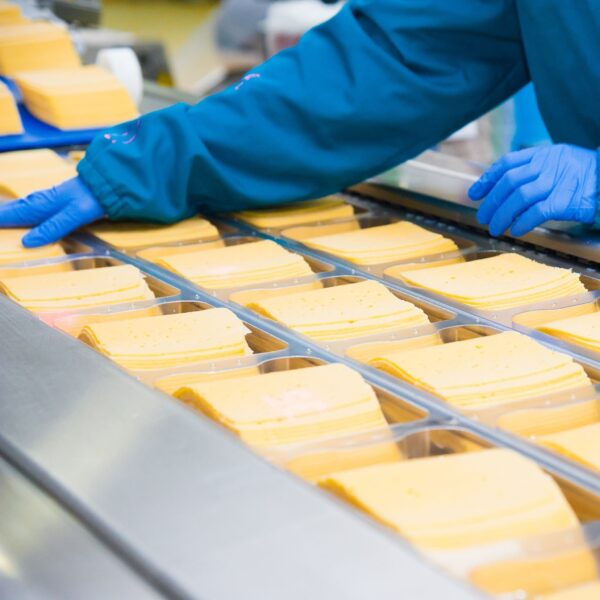Pea protein isolate (PPI) is a concentrated form of pea protein obtained from yellow split peas (Pisum sativum). Because it has a protein content of about 85-90% and exceptional digestibility, it’s a popular concentrated vegan protein source. Pea protein isolate is commonly used in the food industry due to its high protein content, desired amino acid profile, and other metabolic and nutritional properties.
How is Pea Protein Isolate Made?
The process of isolation of protein from peas involves a combination of physical processing, heat treatment, mechanical forces, and enzyme treatment to separate the protein from the other components, such as starch and fiber.
Pea Protein for Special Dietary Needs
Pea protein isolate is gluten-free, lactose-free, easy to digest, and exhibits low incidents of allergens, making it a high-quality protein for use in the diet of people with special nutrition needs, including:
- Child nutrition
- Geriatric nutrition
- Diet for muscle building
- Dairy-free diet for lactose intolerant
- Plant-based diet
- Veganism
- Keto-friendly
Use of Pea Protein Isolate in the Food Industry
Pea protein isolate can play various functions in food systems. A few of the most common are listed below.
- Protein source
- Texturizing agent
- Thickening agent
- Emulsifier
- Binder
- Film-forming agent
Applications in the Food and Beverage Industry
Pea protein isolate can be used in a variety of food products, including:
| Category | Examples |
|---|---|
| Dietary Supplements | Pea Protein Powder, High-Protein Energy Blends |
| Beverages | Protein Drinks, Other Non-Alcoholic Beverages |
| Confectionery | High-Protein Pars, Chocolates |
| Vegan Alternatives | Meat Analogues, Non-Dairy Milk |
| Dairy | Ice Cream, Milk Drinks |
| Bakery | Cake, Cookies, Pastries |
Properties of Pea Protein Isolate
| Density | 0.4 kg/L |
| Storage Temperature | > 25 °C & > 65% RH |
| Solubility in Water | 664 – 995 g/kg at pH 8.0 |
| Physical Form | Powder |
| Shelf Life | 24 Months |
| pH (10% solution) | 7.0 – 8.0 |
| Claims (*Product Specific) | Gluten-free, Naturally Derived*, Non-GMO, Plant-Based, Vegan, Kosher*, Halal* |
| Appearance | White-Beige Powder |
Pea Protein Isolate Formulation Considerations
Here are several considerations when using pea protein isolate in food products.
Extraction
The method used for extracting pea protein isolate has a major effect on the functional properties and characteristics of the final PPI product. The product must be further purified to get the PPI. Specific considerations for each method of extraction are detailed in the table below.
| Method of Extraction | Properties & Comments |
|---|---|
| Alkali Extraction & Isoelectric Precipitation | – Most frequently used conventional technique – Native structure of proteins is disturbed, and the folded protein is destabilized – High digestibility and bioavailability – Slightly higher legumin content – Mostly used for improving the texture and nutritional quality of food |
| Alkali Extraction & Ultrafiltration | – Lower oligosaccharide and phytic acid content – High protein content compared to salt extraction |
| Dry Fractionation | – Lower purity of protein – Higher concentration of starch & fiber |
| Salt Extraction | – Comparatively higher vicilin and convicilin content – Produces protein with higher solubility – Higher oil holding & foaming capacity – Lower water holding capacity comparatively |
| Mild Fractionation | – Hybrid method – Increased purity |
Variant
The type of pea protein isolate also has implications for formulation. Consider the following:
Texturized Pea Protein Isolate
Pea protein isolate can be texturized to obtain fabricated palatable food ingredients processed from an edible protein source. Pea protein can be texturized using high moisture extrusion cooking methods where the fibrous structures develop. The extruded product has changed textural (sensory) properties and is primarily used in applications like meat analogs.
Modified Pea Protein
Modifying a protein’s molecular structure or chemical groups by specific methods may provide better functional properties. The different modification methods and their characteristics are shown below.
| Category | Processing Method | Modified Characteristics |
|---|---|---|
| Physical Modification | High-Pressure Treatment (HPP) Heat with Shear Treatment (Extrusion) Cold Atmospheric Pressure Plasma Treatment Ultrasonic Treatment | Structural changes, foaming stability, and emulsifying properties enhanced Improves the texture of protein Improves solubility, emulsifying ability, and water-holding capacity Improves gelling properties and enhances solubility |
| Chemical Modification | Glycation Acylation Deamidation | Helps to reduce beany flavor Helps to improve solubility, emulsion stability, water-holding capacity, and foaming properties. Improves solubility and reduces unpleasant beany flavor, bitterness, and lumpiness |
| Biological Modification | Fermentation Enzymatic Modification | Improves the digestibility of protein Improves protein solubility, hydrophobicity, emulsifying, and foaming properties |
Dosage
Pea protein isolate is intended for use as an ingredient in various food categories at levels ranging from 1-90% depending upon the food product and functionality as follows:
| Category | Usage Level |
|---|---|
| Bakery Products (Including Breads, Rolls, Bars, Cakes, Pasta, Cookies) | 5-10% |
| Cereals (Including Cold Cereals, Oatmeal, Cereal Bars) | 1-30% |
| Snack Foods (Including Chips, Crackers, Energy Bars) | 2-30% |
| Liquid foods (Including Ready-to-Drink (RTD) Beverages, Soups, Smoothies, Fruit Juices, High Protein Beverages) | 3-50% |
| Dairy and Dairy Alternatives (Including Cheeses, Spreads, Creamers, Yogurt, Drinkable Yogurts, Ice Cream, Refrigerated Desserts, Frozen Desserts, Milks, Dips, Whipped Toppings) | 2-20% |
| Meal Replacement/Nutritional Bars | 10-30% |
| Meat Analogs | 10-30% |
| Processed Meat | 2-7% |
| Dry Blend Pea Protein Powder | 20-90% |
| Extruded Products (Such as Pea Crisps) | 30-90% |
| Chocolate and Confection Compound Coatings | 10-25% |
| Non-Chocolate Confection (Such as Chewy Candies and Gummies) | 2-30% |
Nutritional Profile of Pea Protein Isolate
Pea protein isolate consists of >80% protein on a total weight basis. The protein in peas can be classified into four major groups: albumin, globulin, prolamin, and glutelin, where the majority are globulins (65–80%) and albumins (10–20%). Globulin has two main fractions: legumin (pI 5–6) and vicilin (pI 4–6), with a minor amount falling into a third category known as convicilin. It is mainly a mixture of trimeric 7S (vicilin) and hexameric 11S (legumin) globular proteins.
Amino Acid Profile of Pea Protein Isolate
Pea protein isolate is easy to digest and is considered a complete protein, containing all nine essential amino acids. The following table gives the amino acid profile of pea protein.
| Amino Acid | Pea Protein (g/100 g) |
|---|---|
| Essential Amino Acids | |
| Valine | 2.7–5 |
| Leucine | 5.7–6.4 |
| Isoleucine | 2.3–4.5 |
| Methionine | 0.3–1.1 |
| Phenylalanine | 3.7–5.5 |
| Tryptophan | 0.7–1 |
| Threonine | 2.5–3.9 |
| Lysine | 4.7–5.7 |
| Histidine | 1.6–2.5 |
| Non-Essential Amino Acids | |
| Alanine | 3.2–4.3 |
| Aspartic Aacid | 8.9–11.5 |
| Cystine | 0.2–1 |
| Glutamic Acid | 12.9–13.2 |
| Glycine | 2.8–4.1 |
| Proline | 3.1–4.5 |
| Serine | 3.6–5.3 |
| Tyrosine | 2.6–3.8 |
Typical Formulations
Here are three examples of how a product containing pea protein isolate might be formulated:
Meat Analogue
Here is an example of a plant-based burger formulation table with pea protein isolate along with the % weight of ingredients:
| Ingredient | % Composition |
|---|---|
| Water | 52.00 |
| VITESSENCE® TEX Crumbles 102 textured protein (65% Protein) | 20.00 |
| Coconut Oil | 11.00 |
| Sunflower Oil | 5.00 |
| Ticagel® MA 0990 PB | 3.00 |
| Flavors | 2.70 |
| Color Agents (Kerr Red Beet JC 70˚Brix, Cocoa Powder, Paprika, Tomato Paste) | 2.35 |
| Spices | 1.25 |
| VITESSENCE® Pulse 1803 pea protein (PPI >80% Protein) | 1.00 |
| N-ZORBIT® M Maltodextrin | 1.00 |
| Salt | 0.50 |
| Lactic Acid (Vegan) | 0.20 |
High Protein Bread
Here is an example of a high protein bread formulation table where commercial wheat flour was substituted at a 10% level (dry basis) with isolate to produce bread with protein content over 20%.
| Ingredient | % Composition |
|---|---|
| Whole Grain Flour | 90 g |
| Pea Protein Isolate | 10 g |
| Instant Yeast | 0.66 % |
| Sugar | 6 % |
| Salt | 1.5 % |
| Shortening | 3 % |
High Protein Beverage Mix (Protein Mix)
Here is an example of a high protein beverage mix formulation table containing a pea protein isolate that can totally or partly substitute milk or soybean protein with a neutral taste and produce a mix suitable for powder mixes and UHT beverages.
| Ingredient | % Composition |
|---|---|
| Maltodextrin (Glucidex ®) | 17.60 % |
| Milk Protein Concentrate (MPC 80 Fonterra) | 5.53 % |
| Pea Protein Isolate (Nutralys® S85F) | 5.67 % |
| Sucrose | 3.4 % |
| Rapeseed Oil | 3.78 % |
| Sunflower Oil | 2.52 % |
| Sunflower Lecithin | 0.40 % |
| Vanilla Flavoring | 0.36 % |
| Mineral Mixture | 0.273 % |
| Vitablend 7402 | 0.469 % |
| Demineralized Water | 60 % |
Comparison with Other Protein Isolates
Protein is an essential nutrient that aids in various body functions, including:
- Regulates and boosts metabolism
- Helps to build muscle and maintain lean muscle mass and bone tissue
- Aids in digestion
- Aids in the absorption of crucial minerals such as calcium and iron
- Supports immune function
- Promotes satiety (fullness)
- Improves cognitive function
- Prevents age-related loss of bone mass
Compared to other protein isolates, including soy protein isolate, whey protein isolate, and sunflower protein isolate, pea protein isolate has an edge in certain aspects.
Digestibility
Pea protein isolate is a highly digestible protein with an 86% Protein Digestibility Corrected Amino Acid Score (PDCAAS) for children and 93% PDCAAS for adults. Additionally, extensive efforts have been made to reduce the amount of anti-nutrition factors, such as phytic acid, tannins, and trypsin inhibitors, by modifying the extraction process and developing different cultivars.
Health Benefits
Pea protein is the exception to plant proteins in that it contains all nine essential amino acids and is considered one of the industry’s most “complete” plant-based proteins. It is a good source of BCAAs (leucine, isoleucine, and valine), which promote muscle growth. Additionally, it contains arginine, an amino acid linked with supporting better endurance.
It’s also free from common allergens such as dairy, soy, and gluten, making it an exceptional vegan protein powder. However, it does not provide a comparable amount of each amino acid relative to animal-based proteins such as whey.
Sensory Profile
Pea protein isolate is known to have an earthy, vegetative flavor and can sometimes have a chalky, gritty texture, although it’s mild compared to soy protein or groundnut protein. The use of taste maskers may help mask off flavors. Unflavored pea proteins are available in the market as well.
Presence of Anti-Nutritional Factors
Pea protein has a comparatively lower concentration of anti-nutritional factors like phytic acid, tannins, and trypsin inhibitors than soy protein. Also, soy protein may influence hormone levels.
Sustainability
Peas require less water, are drought tolerant, are an ideal candidate for crop rotation, and reduce the need for nitrogen fertilizers because they take nitrogen gas from the air and store it in their roots. In contrast, more than 90% of soy crops are genetically modified and sprayed with an herbicide called Roundup, known to have adverse health consequences. Unlike whey proteins, pea protein is a more sustainable and renewable source of protein.
Effect on Properties of Food Products
Due to its unique characteristics, pea protein isolate has specific effects on the properties of food products.
Texture
Texturized pea protein isolate can help to improve the texture of food products. It binds the ingredients together, adds stability, and can improve the overall structure of the product. Texturized pea protein can also be added to products where a fibrous, chewy nature is desired.
Consistency
Proteins are amphiphilic biopolymers that can function as stabilizers of oil-in-water emulsions, as they adsorb on the immiscible oil-in-water interface and decrease the interfacial tension. Pea proteins are promising oil-in-water emulsifying agents at both neutral and acidic conditions. Emulsification at acidic pH using pea proteins resulted in smaller oil droplets than emulsification at neutral pH. Additionally, pea protein isolate can be used as a thickening agent and can help improve the product’s shelf life. Pea protein isolate also causes an increase in viscosity and can improve the mouthfeel of liquid preparations.
Pea Protein Isolate Safety & Regulatory Concerns
Pea Protein Isolate is Generally Recognized as Safe (GRAS), consistent with Section 201(s) of the Federal Food, Drug, and Cosmetic Act. This GRAS conclusion is based on scientific procedures in accordance with 21 C.F.R. §170.30(a) and (b) and conforms to the guidance issued by the Food and Drug Administration (FDA) under 21 C.F.R. §170.36, 81 Fed. Reg. 54960 (Aug. 17, 2016).
Additional Sources & Resources
- Titan Biotech LTD. – Everything You Want to Know About Pea Protein Isolate
- AGN Roots – Pea vs. Whey Protein
- Health Kart – Is Pea Protein Better Than Soy Protein?
- Time Magazine – The Rise of the Pea: How an Unassuming Legume Emerged as a Frontrunner in the Race to Replace Meat and Dairy
- NIH – The Current Situation of Pea Protein and Its Application in the Food Industry
- DNB – Texturization of Pea Protein Isolates Using High Moisture Extrusion Cooking
- ReaserchGate – Solubility of Pea Protein Isolate at Different pH Values









